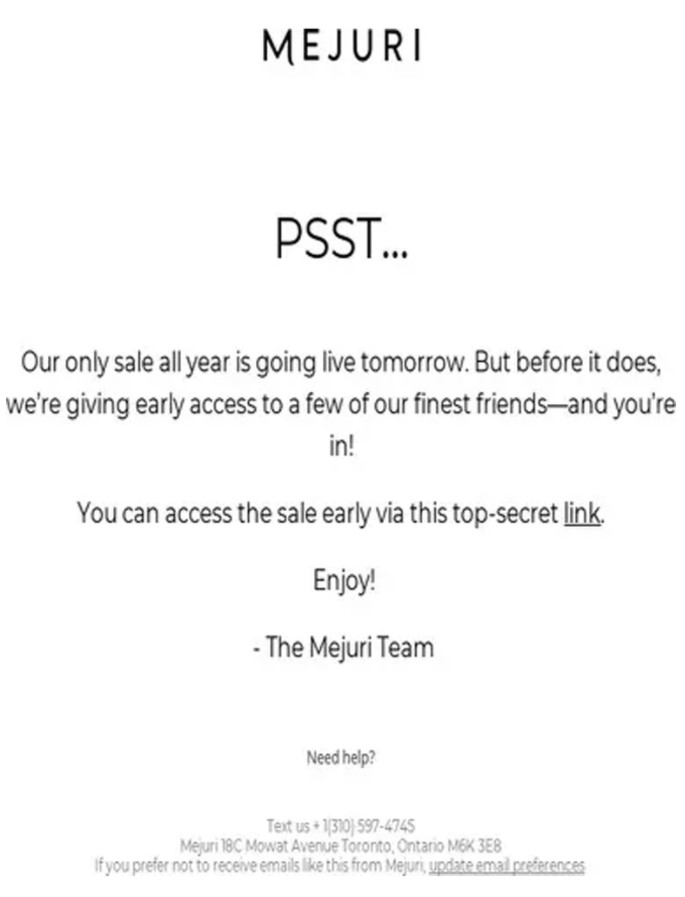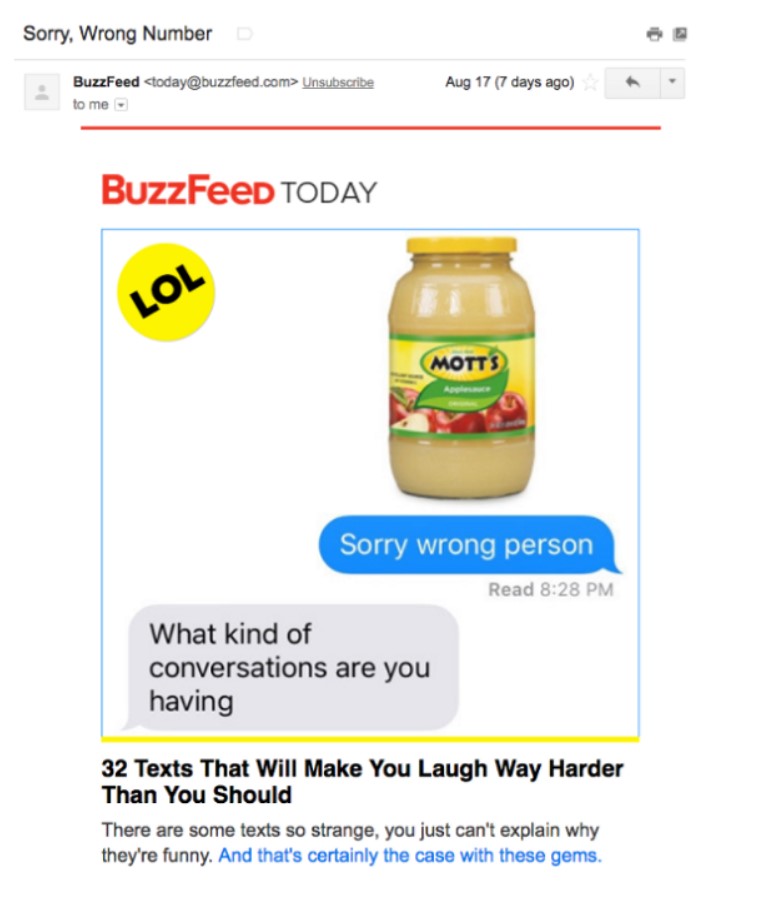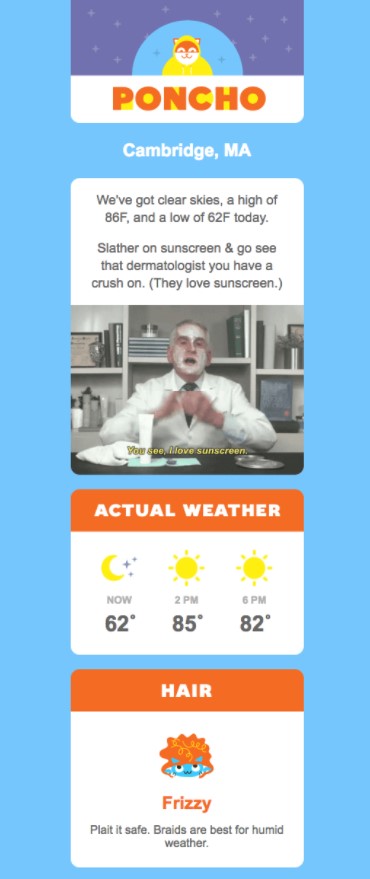Viral Email Marketing: What it is and How to Do it?
Quick question: When viral marketing and email marketing cross, what will you get?
Answer: Viral email marketing.
In many ways, viral email marketing is quite similar to email marketing, except that viral emails are delivered with the intention to be forwarded to their friends and other contacts. While viral email marketing is not the most conventional form of marketing, it can be a profitable method of building your brand awareness if you devise a plan focusing on your customers’ interests.
If you’re considering using this form of marketing, our blog will tell you how. Let’s get going!
What is viral email marketing?
Viral email marketing is simply a method of email marketing that strives to get emails shared quickly and between many people. It relies on forwarding, sharing, and referrals to quickly and exponentially spread content to as many people as possible.

Although concocting a viral email marketing campaign might be considered “fun,” it is vital that you still follow best practices to ensure that it adheres to anti-spam laws and lands in the inbox of your target audience. The purpose of your viral email campaign remains the same as that of a traditional campaign, as it’s there to create awareness for your brand, inform your subscribers, make an offer, share important (or humorous) news, and ultimately develop lasting relationships with your customers.
4 examples of successful viral email marketing
The key to a successful viral email marketing campaign is to understand your target audience. By understanding what resonates with them, you’re able to create an email marketing strategy that engages your viewers. More importantly, it can motivate them to share your message with others.
To inspire you, below are 4 examples of successful viral email marketing campaigns.
1. Mejuri
Most of us love a bargain, and the only thing we love more than a bargain is the sense of belonging to an exclusive club!

The above email from jewelry designer Mejuri goes viral because:
-
It offers practical value. Getting a preview of the sale goods can give you a chance to get what you desire at a reduced cost before anyone else.
-
It has social currency. “Social currency” makes you want to be the one that gives the benefit to others. Early access to the sale goods is valuable to you, so it’ll surely be valuable to some of your friends.
-
There’s a trigger. The above email provides a reason to act now before everyone can see the special pricing.
By offering an exclusive benefit, Mejuri encourages its email subscribers to push its message out to their own wider networks. This helps spread the word about itself and its offering.
2. BuzzFeed
Messages that can resonate with readers’ emotions are more likely to be shared. In fact, many studies show that humorous content is the most likely to go viral.
Storytelling is also a critical factor in creating viral emails. It is quite natural for people to become involved in a narrative. A good cliffhanger can keep your audience watching for more information from your business. So, consider a series of emails that continue to unveil a part of your story. These build interest, pique curiosity, and raise brand awareness.
In this viral email marketing campaign, BuzzFeed creates a relatable and funny story with clickable and shareable content. It delivers preferred messaging directly to its subscribers’ inboxes. It keeps recipients engaged, appeals to their emotions, and is something people are likely to share with their contacts.

3. Think with Google
If you want people to share your emails, you should ask them to do so and make the process as brief as possible by adding social media buttons in your email.
A message can go viral on social media just as easily as it can via inboxes. One awesome way to do this is to make the information public. For instance, announce how many views your video has received or reveal how much money your customers have saved. When people see what others are doing, they are more likely to follow suit.
Let’s look at the following email from Think with Google. It is highly shareable in various ways:
- A clear CTA to learn more about its services provided
- With prevalent social media links, the email can be shared online
- A link geared explicitly towards converting recipients into subscribers

4. Poncho
There’s actually so much content competing for our attention that you need to do something different to break through the “scroll on” reflex and then into the realm of conscious attention.
Below is a great example of clever content that effectively works in the email content: a bespoke weather forecast email from Poncho. It is funny, personalized (you can see the full email right here), and it makes you pay attention.

But why not share this on social media? Why use email?
It is a question of trust.
Social media is excellent for expanding your marketing reach, as most Facebook friends, or Twitter followers are networks of loose connections. You can see what your network shares, but it rarely feels like a personal recommendation or endorsement from people whose opinion you value. You might like it, you might not.
But many people feel differently about their email inboxes. When our friend or colleague has taken the trouble to forward an email to us, we often feel that it must be important to them and relevant to us.
6 viral email marketing tips
Below are 6 tips for you to follow to help your viral email campaign get sent off without a hitch (and then potentially make the news).
1. Send to your select target audience
You won’t want to appear as a spammer.
That’s why your emails should be sent to your select target audience. It’s also why you are going to tell your recipients not to just forward your message any old way to any old person.
If they are going to pass it on, it’s essential that they use the special “forward to a friend” or “share” button in the body of your email. This allows you to track it easily and get the stats you need, as opposed to if they just forwarded your email regularly, in which case you can’t track it from that point on.
Offering incentives for forwarding could increase the amount of forwarding. However, it might also increase the chances that recipients will spam their entire mailing list, which could have negative effects on your brand.
Thus, it’s essential that you make it clear to your recipients that they too should be highly selective over whom they choose to share your email with.
2. Make your emails unique
Just think about what makes you immediately respond to an email and take action. It is probably because it contains something unique, something that excites or shocks you, or maybe something that makes you rethink your perspective on a vital issue.
You want your email campaign to have a similar effect, so think carefully about your content and the information you’re about to potentially send to thousands of people.
Think outside of the box and don’t quickly fall back on ideas that “normally work.” People are naturally curious about anything that is “new,” and your fresh approach could help you reach higher levels of success.
Related post: How to Write a High Opening Email Campaign?
3. Offer a reward of substantial value
Make sure what you’re offering has substantial value - this can be in the form of giving something away for free (e.g., products, services, white papers, or reports) or offering a tempting coupon or discount (with an expiry date).
If your offer is of material value, be sure that you have enough stock, or the capacity to send out on your promise, in a timely manner.

There’s little worse than offering a reward and not being able to make good on it. You will instantly lose the trust of your customers, and any further campaign you deliver will inevitably get ignored.
On the other hand, send out as promised, and word of your brand will spread like wildfire.
4. Check and optimize your message format
Have you checked your message format? Do you have a plain text and HTML message? Have you optimized it for people who open and share your emails on mobile devices?
Keep in mind that most of your emails are opened and read on a mobile device. Therefore, it’s critical to use this to your advantage and plan strategically.
To optimize your email campaigns for mobile, consider the following tips:
- Don’t use images that are too heavy
- Use responsive email templates
- Be straightforward and brief in your email copy
- Break up your content into short sentences and paragraphs
- Use the CTA button instead of only text links
5. Don’t forget a CTA
Remember to tell your recipients exactly what they need to do and how.
Including a robust CTA in your email might be advice that is drummed in your ears all the time, but it is for a good reason. If you don’t tell people what they need to do, they won’t do it. That’s simple!
In the case of a viral email marketing campaign, your CTA might be along the lines of “forward this to a friend now” or “share on your social networks.” Make sure this is also immediately visible.
6. Send a follow-up campaign
Based on the feedback and stats you get from your first campaign, you could consider sending up a follow-up, targeting those that responded positively to your efforts the first time.
It could be in the form of a survey of the campaign results; people are usually interested to see how their actions impact the overall results of a project. For instance, if you previously sent a video, you could send the unedited version, especially if it has humorous footage. This will help you appear more “human” to your customers.
Or, let them know if you have any further promotions or remind them where they can redeem their coupons or vouchers if you included one in your first email campaign as a reward for forwarding your message.
The bottom line
Typically, it is tough to get viral. However, this doesn’t mean you can’t create one.
We hope this guide has helped you a lot with viral email marketing. By applying it, you can be more confident to broaden your reach, generate leads, and drive sales.
New Posts






